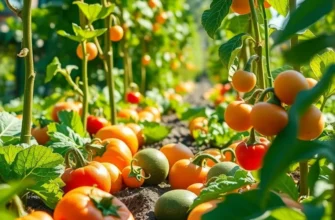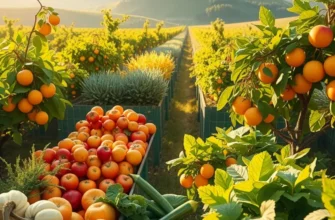Food has a unique ability to bring people together, transcending barriers of language and culture. From family dinners to grand feasts, it serves as a medium for sharing stories, traditions, and values. Across the globe, each culinary practice carries a narrative that reflects the history and identity of its people—reminding us that what we eat is often as significant as how we connect over it. This exploration delves into the role of food as a powerful social glue that binds communities, fosters relationships, and celebrates cultural heritage.
A World of Flavor: Culinary Traditions and Community

Culinary traditions have long served as a bridge between cultures, drawing communities together in an ever-evolving dance of flavors and aromas. Across the globe, these traditions encapsulate the essence of a community’s identity, imbuing each meal with memories, meanings, and shared experiences. Whether gathering for a festive celebration or sharing a simple family meal, the act of coming together around food creates an undeniable sense of belonging.
In many cultures, meals represent more than just sustenance. They are a ritualistic expression of love, celebrating both abundance and scarcity. Take, for instance, the elaborate tea ceremonies in Japan. These events are deeply rooted in respect, harmony, and tranquility, emphasizing the importance of mindfulness in every sip taken. Here, tea transcends its role as a beverage to become a conduit for connection, illustrating how meticulous rituals can create profound bonds among participants.
In Italy, the Sunday family dinner is almost sacred. Multi-generational gatherings around the table are a weekly reminder of familial allegiance. Generations pass recipes down as heirs to an edible kingdom, ensuring that cultural ties are preserved through homemade pasta and ripe tomatoes. This communal dining experience fosters an environment where stories are shared, laughter is commonplace, and the continuity of tradition is affirmed.
Street food markets in Southeast Asia offer a different, yet equally impactful, form of culinary bonding. These bustling venues host an array of flavors that mirror the region’s diverse cultural tapestry. From savory satay in Indonesia to fragrant pho in Vietnam, street food intertwines convenience with communal eating spaces. Strangers become friends over a shared table, united by the vibrant flavors that speak a universal language.
France’s love affair with the boulangerie reflects another dimension of culinary tradition. Daily trips to pick up a fresh baguette are routine, yet each visit is a potential social encounter. Bakers often know their customers by name, turning transactions into treasured exchanges. Thus, bread becomes more than a staple; it is a thread that weaves community fabric.
Beyond these examples, dishes often highlight the values integral to their regions. Consider the communal bowl of injera in Ethiopia, designed to encourage sharing among diners, fostering unity and camaraderie. This shared dining experience embodies the ethos of community, where bonds are strengthened and hierarchies minimized.
Each of these culinary traditions tells stories, both grand and intimate, of people and places united by shared meals. They offer a window into cultural values, illustrating how food can serve as both a metaphorical and literal centerpiece in social bonding. Through exploring these traditions, one appreciates how deeply interwoven food and community are across diverse global cultures.
For more insights on the influence of such culinary traditions that emerge from trade and travel, you might find this article on culinary influences through trade particularly interesting.
Feasting Together: The Power of Shared Meals

There’s something inherently special about gathering around a table to share a meal. The act of eating together transcends mere sustenance, morphing into an opportunity for connection and camaraderie. Throughout history, shared meals have served as a cornerstone of family life and a bridge between cultures. Whether it’s a potluck with friends or a family feast on a special occasion, food has a profound ability to bring people together.
Traditional feasting practices vary across cultures but often feature a communal spirit. Consider the Italian tradition of ‘La Famiglia,’ where family dinners are sacred and laden with multiple courses. These gatherings emphasize unity and continuity across generations, where recipes are handed down with care. In India, a wedding is unimaginable without a grand feast, often serving hundreds of guests. Such occasions demonstrate the social glue that food provides, knitting people into communities.
The psychological benefits of shared meals are noteworthy. Psychologist Dr. Jane Adams suggests that eating together fosters a sense of belonging and reduces feelings of isolation. Research by sociologist Dr. A.C. Coady has shown that families who dine together report stronger connections and better communication. This is echoed by cross-cultural studies indicating that shared meals enhance cross-cultural understanding and empathy.
Real-life anecdotes often highlight the comfort of communal meals. Consider Sarah, who moved to a bustling city far from home. Feeling alienated, she joined a community supper club where people brought dishes from their heritage. The shared dining experience allowed her to form friendships and explore new cultures through food. This environment provided a platform for storytelling, where each dish had a narrative and a history, allowing for a deeper understanding among participants.
Moreover, shared meals can also be low-key yet impactful. Potlucks, for instance, encourage people to bring a dish that represents their background. This informal setup levels cultural divides and allows everyone a taste of diverse flavors, silently whispering tales of distant lands and traditions. Such events prove that even informal gatherings can be rich in cultural exchange, building bridges with every bite.
The communal aspect of eating extends beyond local communities. In an age of increased global mobility and multicultural interactions, shared meals have become an effective tool for cultural diplomacy. Diplomatic dinners often serve as neutral ground where food becomes the lingua franca, breaking down barriers and fostering mutual respect.
For those looking to imbibe the essence of shared meals into their lives, practical tips on meal planning might be beneficial. Consider setting aside time each week for group cooking sessions or organizing potlucks that allow for diverse culinary expressions. These practices not only nourish the body but also the soul, ensuring a deeper connection with those around us.
Enhancing your culinary experiences with spices and seasonings can add to these bonding moments. If you’re looking to diversify your flavor palette, consider learning about flavor boosters without salt. Exploring new flavors can make shared meals even more exciting and enriching.
In summary, shared meals are a universal ritual of connection. They create spaces for intimacy, understanding, and joy, showcasing the power of food as a unifying force. As we gather around tables, whether laden with extravagant feasts or modest spreads, may we continue to honor the connections that these shared experiences bring.
Final words
Food is more than mere sustenance; it is a vital thread that weaves through the fabric of humanity. Each meal shared or tradition honored serves to remind us of our interconnectedness, nurturing relationships, and cultivating understanding among diverse cultures. By embracing culinary traditions, we not only celebrate heritage but also create opportunities for dialogue and connection. So the next time you gather around a table or savor a new dish, remember that each bite carries with it stories of love, tradition, and community.








